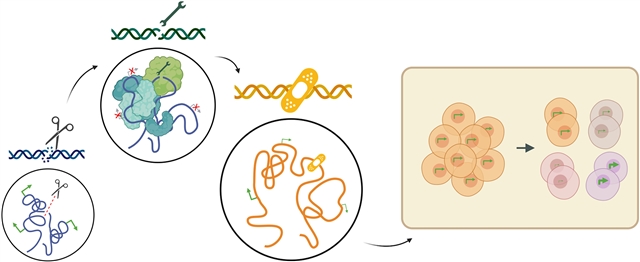
研究团队发现,包含构象敏感基因的拓扑相关结构域(TAD)内的单DNA双链断裂(DSB)会引起持久的染色质改变,这种改变在DNA修复完成后持续存在,并以拓扑重排和局部RNA物种的丢失为特征。这些新获得的后链对染色质的特征被传递给子细胞,并表现为基因表达的遗传性损伤。这些发现揭示了DNA断裂的一个迄今为止被隐藏的维度,小组称之为DNA修复后染色质疲劳,它赋予基因功能超越DNA修复的遗传性损伤。
据悉,当DNA断裂时,一个基因组位点在三维染色质结构中发生改变,以促进信号传导和修复。尽管细胞具有修复受损DNA的机制,但尚不清楚周围的染色质是否会恢复到原始状态其状态。
附:英文原文
Title: Repair of DNA double-strand breaks leaves heritable impairment to genome function
Author: Susanne Bantele, Irene Mordini, Alva Biran, Nicolas Alcaraz, Gijs Zonderland, Alice Wenger, Nils Krietenstein, Anja Groth, Jiri Lukas
Issue&Volume: 2025-11-06
Abstract: Upon DNA breakage, a genomic locus undergoes alterations in three-dimensional chromatin architecture to facilitate signaling and repair. Although cells possess mechanisms to repair damaged DNA, it is unknown whether the surrounding chromatin is restored to its nave state. We show that a single DNA double-strand break (DSB) within a topologically associated domain (TAD) harboring conformation-sensitive genes causes lasting chromatin alterations, which persist after completion of DNA repair and feature topological rearrangements and loss of local RNA species. These newly acquired features of postrepair chromatin are transmitted to daughter cells and manifest as heritable impairments of gene expression. These findings uncover a hitherto concealed dimension of DNA breakage, which we term postrepair chromatin fatigue and which confers heritable impairment of gene function beyond DNA repair.
DOI: adk6662
Source: https://www.science.org/doi/10.1126/science.adk6662
